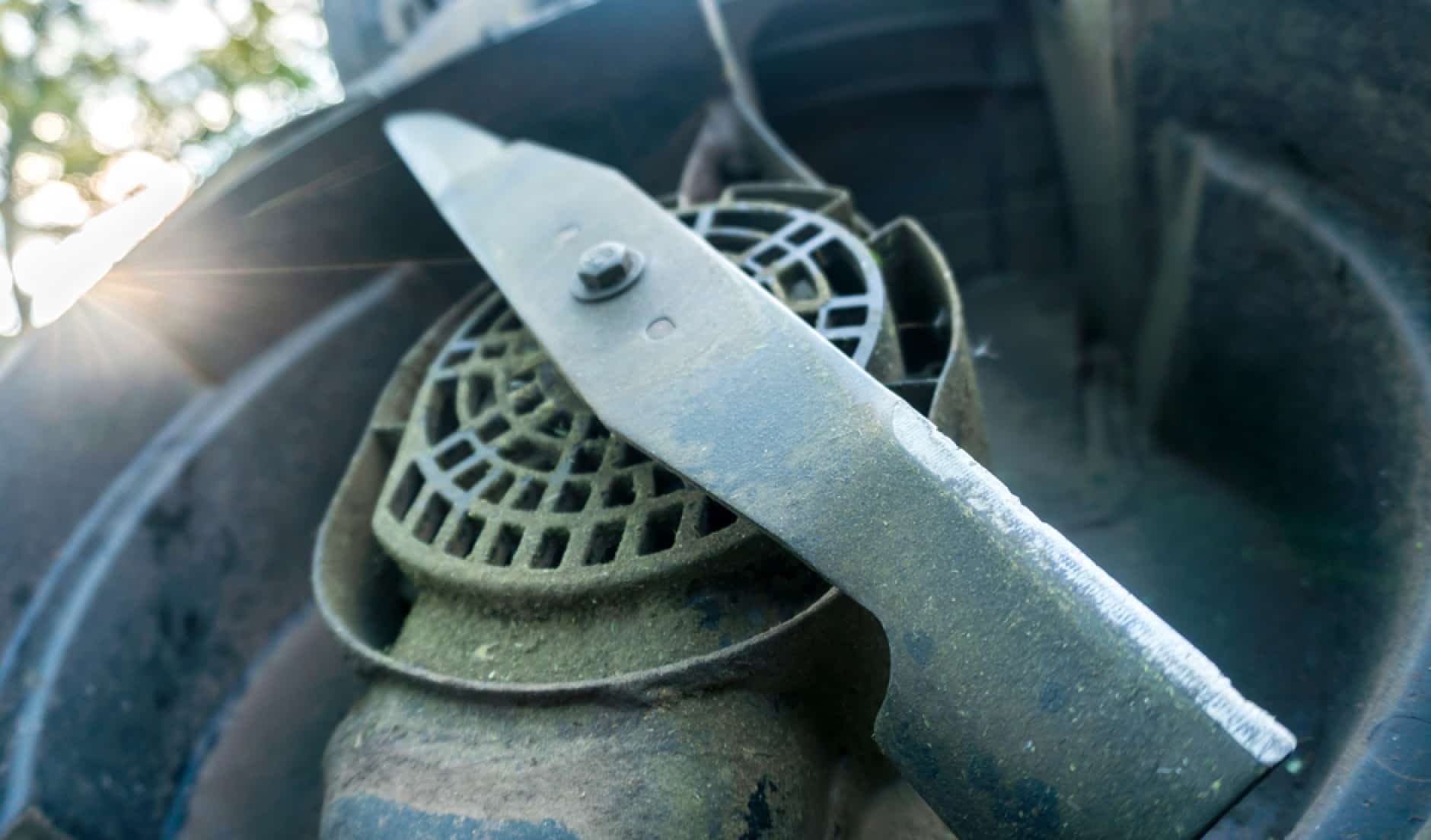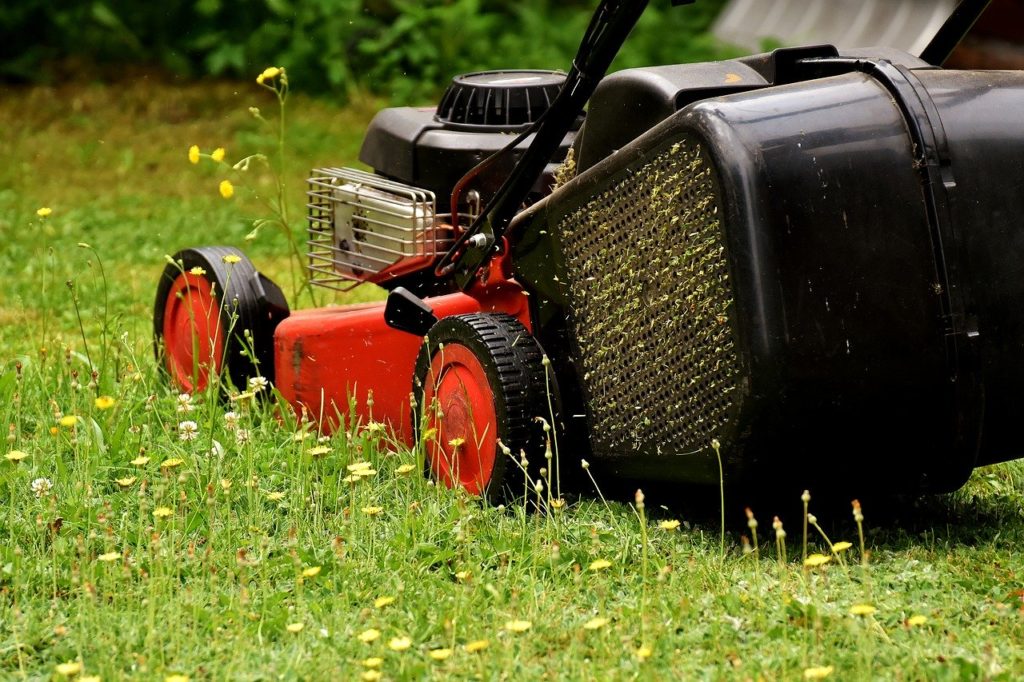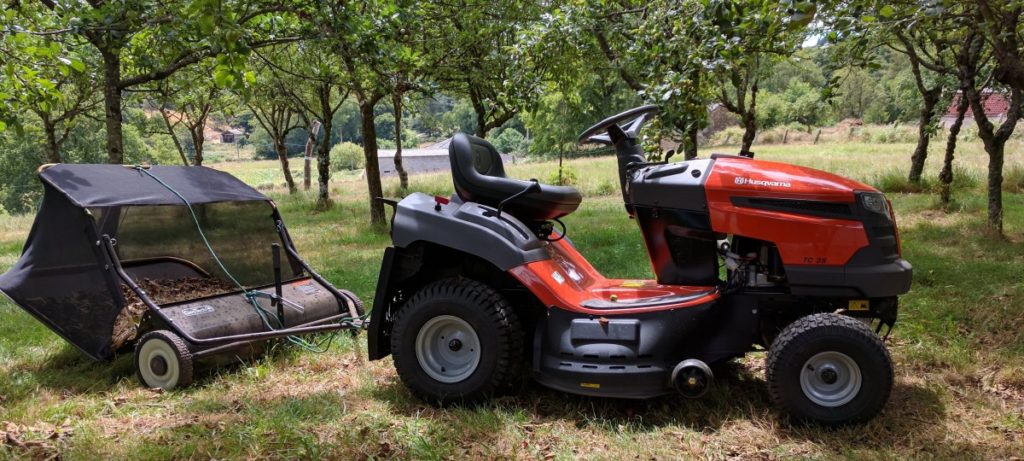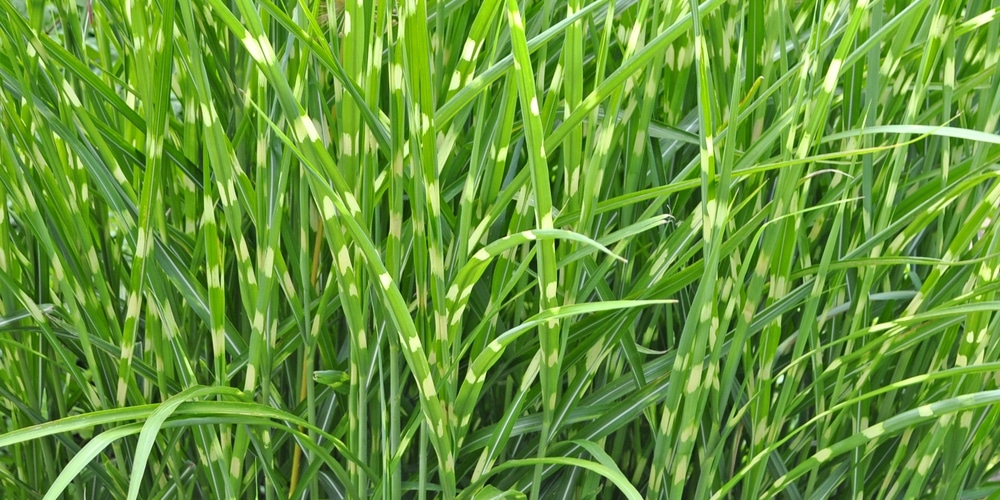A few symptoms can tell you if your lawnmower blade is bent. The number one cause is vibration.

Vibration is The Symptom
The number on tell that a mower blade is bent will be vibration. Mower blades are balanced. When they bend it throws this balance off causing vibration.
The more bent it is, the harsher that the vibration will be. Also, the grass will cut unevenly. The more bent the blade, the more likely it will be noticeable to you.
Avoiding a Bent Blade
It’s best to avoid a bent blade altogether. Know your yard and any place in it where there are rocks or low lying stumps. Hitting a stump can cause the blade to bend easily.
Combing through the yard before mowing to look for rocks and large sticks is a great way to avoid a bent blade. Baseballs can destroy a blade pretty easily.
Replacing a Bent Blade
A bent blade is easy to fix. Replace it with a new one. Attempting to straighten a blade is just not worth it. New ones are cheap and readily available. Here are the steps involved.
Push Mower

- Make sure you have the exact blade called for in your owners manual. Different push mowers use different blade sizes.
- Disconnect the spark plug
- Make sure that the engine oil and gas caps are both secured, as you’ll be turning the mower upside down.
- Flip the mower upside down, while trying to keep the spark plug facing slightly uphill if you can. This keeps oil from entering the combustion chamber.
- Grip the blade with your gloved hand, or use a booted foot to keep it from turning and twist the nut off.
- Replace the blade and torque to the spec recommended by your mower’s manufacturer.
Riding Mower

- Make sure you have the exact blade called for in your owners manual. Different push mowers use different blade sizes.
- Lower the deck and disconnect the belt.
- You’ll have to disconnect the deck form the mower’s chassis. The procedure for this varies from mower to mower, but is easier than you would think if you’ve never done it before.
- Flip the deck over to access the blade(s)
- Grip the blade with your gloved hand, or use a booted foot to keep it from turning and twist the nut off.
- Replace the blade and torque to the spec recommended by your mower’s manufacturer.
While not entirely necessary, a good pair of thick gloves can help keep your hand cut by a blade that is still sharp or jagged. We highly recommend them.
How to Clear a Yard Of Debris that Can Hurt a Mower Blade

1. The Pre-Mow Sweep
- Walk the Yard: Begin by walking around your yard and visually inspecting for any potential debris culprits. Look out for sticks, rocks, toys, or any foreign objects that could harm your mower.
2. Get Geared Up
- Safety First: Equip yourself with gloves, safety glasses, and sturdy footwear. Safety is paramount when dealing with yard debris.
3. The Cleanup Routine
- Remove Larger Items: Start by manually removing larger debris like branches, stones, or any sizeable objects. Place them in a designated pile for disposal.
- Raking Leaves and Smaller Debris: Use a rake to gather leaves, twigs, and smaller debris into manageable piles. This not only protects your mower blade but also leaves your yard looking tidy.
- Inspect the Lawn: Walk the yard again to double-check for any remaining hidden obstacles.
4. The Final Inspection
- Scan the Yard: Before starting your mower, give your yard one last visual sweep to ensure it’s free from hazards.
5. Mow with Care
- Slow and Steady: When mowing, proceed at a moderate pace to avoid any sudden impacts with debris.
- Adjust Mower Height: Raise your mower’s cutting height to provide a buffer between the blade and the ground, reducing the risk of contact with small debris.
6. Post-Mow Cleanup
- Collect Residual Debris: After mowing, gather any stray debris that may have been stirred up during the process.
- Dispose Properly: Dispose of the collected debris in accordance with local regulations. Composting or recycling may be options for some materials.
Conclusion: Bent Blade Symptoms
There are many reasons why your blade may be bent, but really, just one symptom: vibration.